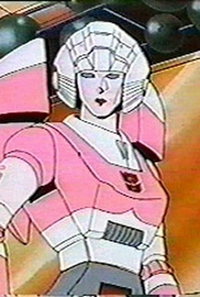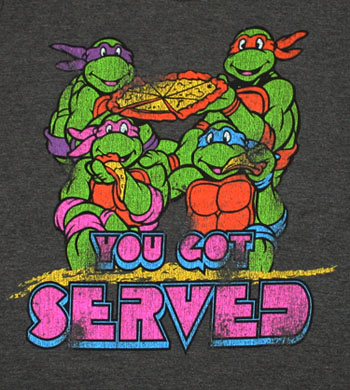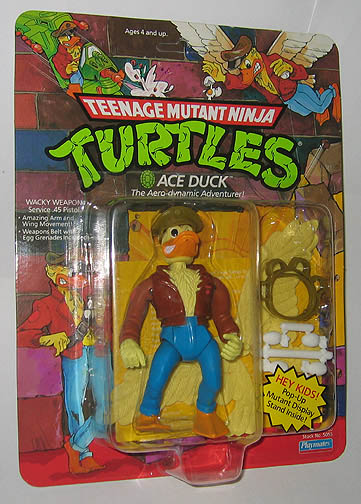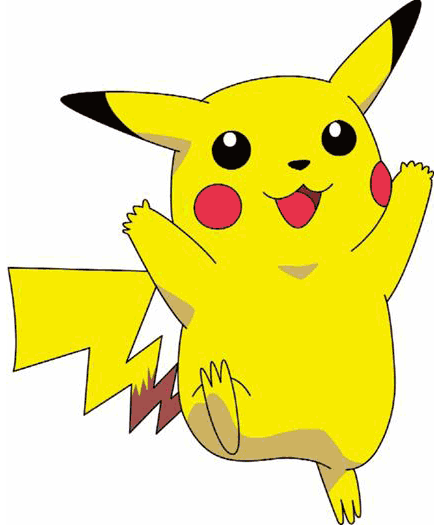If you wish to put out a television show and market it to kids, you basically have two options: gently educate them, or suck their parents for every dollar they own. Teaching kids and molding them into responsible adults is a wonderful venture, but it’s also really, really hard. Luckily, it’s far easier to just flash a bunch of shiny stuff in front of their faces and basically hypnotize them into screaming and crying until Mom and Dad buy them everything they saw on the tube that morning. These six shows have turned option two into an art form.
1.
Transformers and He-Man
These are the ones that started it all, basically. Prior to the mid-1980’s, there were several strict advertising laws in place that prohibited television creators and producers from creating shows that blatantly used their shows as an excuse to sell toys. Well, if you enjoy being pandered to in cartoon form, you have President Reagan to thank. He authorized the deregulation of the kid’s show industry, mainly because all those wars we were fighting back then were just too quick and easy (hi Grenada!). So he needed something to do.

The war really freed up his schedule.
This law he passed basically told the world that it’s OK to sell toys to children by flashing colorful lights in front of them for 30 minutes, attaching something resembling a plot if the writers remember to do so, tack on an optional moral at the end about violence not being the answer despite showing nothing but violence the whole time and, above all, sell sell SELL. And no two shows capitalized on this trend quicker than Transformers and He-Man.
One show was same as the other, as far as this discussion is concerned. These shows established the overall formula for capitalism-loving kids’ shows, which is followed quite religiously to this day:
— Cram as many characters as you possibly can into every episode (all with an accompanying toy available at stores near you.)
— Have new characters introduced every season, ones that don’t necessarily make sense to the story but boy are they shiny.
— Combine with a McDonald’s Happy Meals that just happen to include a burger and fries with every toy purchase.
— Put out pointless movies that are the exact same thing as the show, only longer and now you have to pay to watch.
— Compose an insanely catchy theme songs that kids will loudly sing over and over again, just in case parents didn’t get the point the first fifteen thousand times.
This strategy is quick and easy, much like the one female Transformer was. Just because you’re a robot that can turn into a car doesn’t mean you don’t need lovin’ too.

We probably just gave Lady Gaga a new costume idea.
2.
Teenage Mutant Ninja Turtles

Splinter taught them / to be a marketing team…
Now that the theme song is in your head for the rest of the year, let’s discuss turtles and how they can keep your family rolling in dough for a dozen generations or so. With the Turtles being a hugely successful cartoon with tons of heroes and villains all over the place, it would only make sense to market the ever-loving bejesus out of them. And so it went: video games, board games, toys, dolls, bedspreads, clothing, coffee mugs, sex toys (just wanted to see if you were paying attention), you name it. These four oversized, headband-wearing, shell-touting, masters of ninjitsu were literally everywhere.
So what makes the Ninja Turtle marketing craze different from any other, you ask? Simple: other shows on this list made millions by selling out the actual characters on the show time and again. But Playmates, the loving masters behind the TMNT marketing juggernaut, decided to break with tradition and basically admit they were totally in it for the money. How did they do that? Simple: they designed and sold toys based on characters and gadgets that didn’t exist for more than one or two episodes at best. And when that well ran dry, they just made everything up!
Basically, the secret to the Ninja Turtles’ success was to take their face, and anything resembling their face, or anything resembling something that may or may not have come into close contact with their face, and slap it onto whatever costs money. Remember Mondo Gecko? The Flushomatic? The Footski? Oozey? Ace Duck? Panda Khan? Killer Bee? Do you even know which of those things were characters and which were machines? Unless you are literally the saddest creature on the planet then no, you do not.

Turtle power?
But hey, how about that time Leonardo dressed as a Sewer Samurai? Or when Raphael blasted to Mars and became a space cadet? Perhaps you fondly look back on Donatello going undercover as a hardboiled 1940’s detective. Or that time Raph donned spy goggles shaped like his own head to snoop on the Foot Clan’s latest dastardly planning session? Remember those classic episodes? Your memory might not, but your formerly large bank account certainly does.
3.
Pokemon
What’s a Pokemon? If you actually have to ask that question, then you’re a far luckier and happier person than any of us. Pokemon are any of (initially) 150 different creatures who said nothing but their own name over and over again, just to make sure no kid forgot about even one character hitting store shelves worldwide. And make no mistake; this show was all about mass hording in the name of capitalism. The main character’s goal in life was to collect every single bloody one of these things and then train them to fight other Pokemon in what amounted to just the cutest little cockfight you ever did see.

D’awwwwwwwwwwwww
The show’s tagline was, “Gotta Catch ‘Em All!” Unless you’re hosting a fishing show, this line can only mean one thing: there are a lot of characters in our show, and you will plunk down money for all of them. Or your children will bite you. And, sure enough, there were action figures galore for many of these characters and God save your wretched soul if you didn’t buy them all.
Moreso than the action figures, video games, dolls, greeting cards, and God-Knows-What-Else, Pokemon was about trading cards. Each monster was represented by one, and kids were encouraged/hypnotized into buying them all and battling each other in a kind of prepubescent Magic: The Gathering. Certain cards were naturally quite rare, so parents could look forward to watching a good chunk of their paycheck so their little precious could complete their collection.

This is why you fell behind on your credit card bills.
Except you never can complete your collection. Remember earlier when we mentioned that there were initially 150 Pokemon? Well, it seems every few years a new series of trading cards is released, and tons of new Pokemon were magically discovered. Apparent there was a rock nobody bothered to check under for a while, and a few dozen species of monster secretly bred and mutated. There are currently 493 Pokemon, with a whole new series of cards set to be released in the near future. Yes parents: the Pokemon trend is still crazy popular. No parents, your wallet is still not safe.







